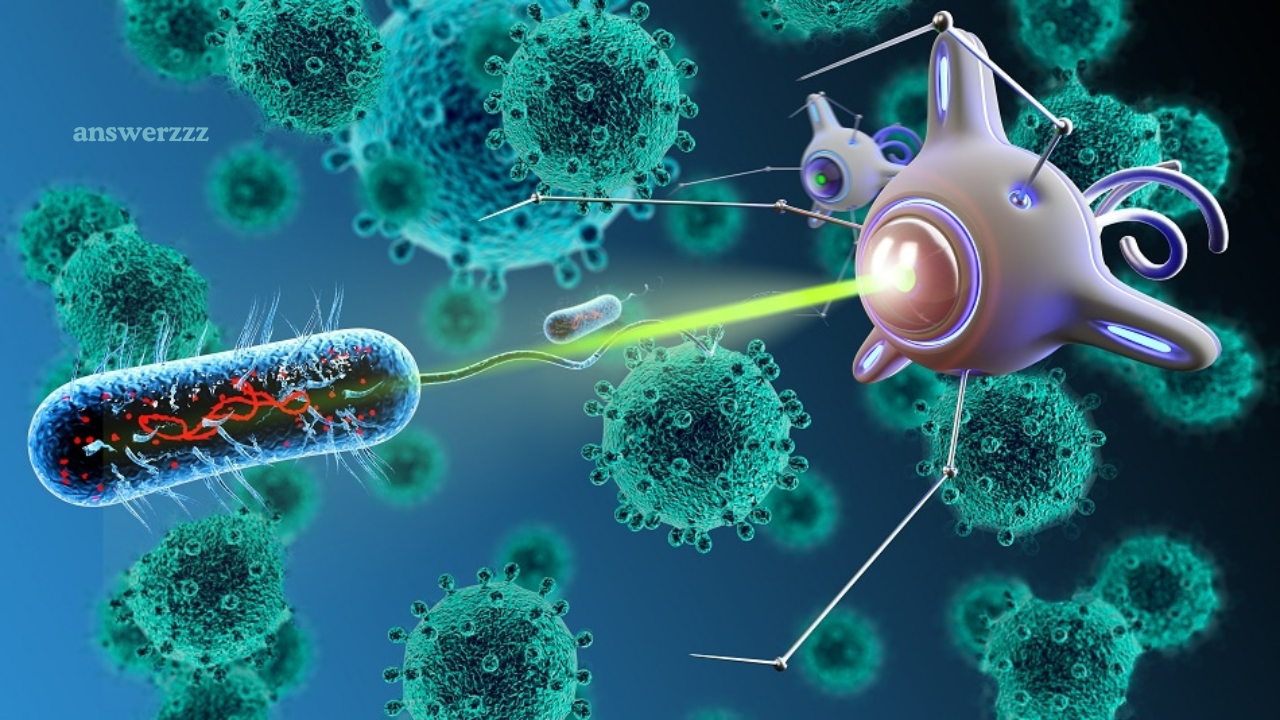Nanotechnology is a rapidly evolving field that has the potential to revolutionize medicine. By manipulating matter at the nanoscale (one billionth of a meter), scientists are unlocking groundbreaking possibilities for diagnosing, treating, and preventing diseases. From more effective drug delivery systems to cutting-edge diagnostic tools, nanotechnology promises to dramatically improve healthcare outcomes. In this article, we will explore the latest innovations in nanotechnology in medicine and examine how these advancements are shaping the future of healthcare.
Understanding Nanotechnology in Medicine
Nanotechnology involves the design, production, and application of structures, devices, and systems by controlling the shape and size of materials at the nanoscale. In medicine, it refers to the use of nanoparticles, nanomaterials, and nanodevices to interact with biological systems at the molecular and cellular levels. This unique capability enables highly targeted treatment and diagnostic approaches that were previously unimaginable.
Nanomedicine is already making waves in areas such as cancer treatment, drug delivery, tissue engineering, and regenerative medicine. The ability to manipulate materials at such a minute scale allows for more precise interventions, reducing side effects and improving patient outcomes.
1. Nanoparticles for Targeted Drug Delivery
One of the most promising applications of nanotechnology in medicine is targeted drug delivery. Traditional drug delivery methods often result in the drug affecting not only the targeted cells or tissues but also healthy ones, leading to side effects. Nanoparticles, however, can be engineered to carry drugs directly to the specific site of disease, such as cancer cells, minimizing damage to healthy tissue.
How It Works:
Nanoparticles, typically made from polymers, lipids, or metals, are designed to encapsulate drugs. These nanoparticles can be functionalized with targeting ligands, such as antibodies, that can recognize and bind to specific receptors found on the surface of target cells. This targeting capability ensures that the drugs are delivered only to the diseased area, improving treatment efficacy while reducing side effects.
Recent Innovations:
- Cancer Therapy: Researchers are developing nanoparticles that can selectively deliver chemotherapy drugs to cancer cells, bypassing healthy cells. Liposomal nanoparticles, for example, have been approved for use in chemotherapy treatments, with the ability to encapsulate chemotherapy agents and release them in response to specific triggers.
- Gene Therapy: Nanoparticles are also being used in gene therapy to deliver DNA or RNA into cells for genetic modification. These nanoparticles protect the genetic material from degradation and ensure its delivery into the target cells.
Example:
One notable advancement is the use of lipid nanoparticles in mRNA vaccines, such as the Pfizer and Moderna COVID-19 vaccines. These nanoparticles help protect and deliver the mRNA, ensuring its stability and efficient uptake by cells.
2. Nanotechnology in Cancer Diagnosis and Imaging
The Future of Wearable Tech: Smart Fabrics and Health Monitoring in 2026
Nanotechnology is also transforming cancer diagnosis by enabling earlier detection and more accurate imaging. Traditional diagnostic methods such as biopsies or imaging techniques can be invasive and sometimes fail to detect cancer at its early stages. Nanoparticles, however, can be designed to bind to specific cancer biomarkers, enhancing the sensitivity and accuracy of diagnostic tests.
How It Works:
Nanoparticles can be engineered with specific molecules that recognize cancer cells. These particles can then be attached to imaging agents, such as fluorescent dyes or radioactive isotopes, allowing for more detailed and specific imaging. Additionally, nanoparticles can be used to enhance the contrast in imaging techniques such as MRI or PET scans.
Recent Innovations:
- Quantum Dots in Imaging: Quantum dots are semiconductor nanoparticles that can be used as fluorescent probes. They emit specific colours when exposed to light, making them ideal for detecting tumours in vivo. Quantum dots have shown promise in imaging techniques for breast cancer, lung cancer, and other malignancies.
- Magnetic Nanoparticles for MRI: Magnetic nanoparticles can be used as contrast agents in MRI scans. They can be targeted to tumours, enhancing the visibility of the cancerous cells and allowing for more precise detection.
Example:
A recent study demonstrated the use of gold nanoparticles conjugated with a specific antibody to target HER2-positive breast cancer cells. These gold nanoparticles were able to enhance imaging signals, allowing for earlier detection of breast cancer.
3. Nanorobots for Disease Detection and Treatment

Nanorobots, or “nanoswimmers,” are microscopic machines designed to navigate through the body, detect disease, and even deliver therapy directly to diseased tissues. These tiny robots, built from nanoscale materials, could revolutionize how we approach complex medical challenges.
How It Works:
Nanorobots are typically powered by external or internal forces, such as magnetic fields, light, or chemical gradients. Once inside the body, they can be directed to specific sites using these forces. These robots can be programmed to sense specific molecules associated with diseases and either collect information or administer treatments.
Recent Innovations:
- Microbiorobots for Targeted Delivery: Researchers have developed “microbiorobots” that can swim through the bloodstream to target and treat diseases. These robots are capable of detecting pathogens or cancer cells and releasing therapeutic agents, all while avoiding healthy tissues.
- DNA Nanorobots: Scientists are also working on DNA-based nanorobots that can be programmed to recognize specific molecular signals and perform tasks such as detecting cancer biomarkers or releasing drugs.
Example:
A study conducted by researchers at the University of California demonstrated the use of DNA nanorobots capable of detecting and responding to a specific molecule associated with cancer. These nanorobots were able to “sense” the presence of cancer cells and release a therapeutic payload.
4. Nanotechnology in Tissue Engineering and Regenerative Medicine
Nanotechnology is also making strides in tissue engineering and regenerative medicine, where it is being used to repair or replace damaged tissues and organs. By mimicking the natural extracellular matrix at the nanoscale, nanomaterials enhance the regeneration of tissues like skin, bone, and nerve cells.
How Brain-Computer Interfaces Are Bridging Humans and Machines
How It Works:
Nanomaterials can be used to create scaffolds that support the growth of new cells. These scaffolds can be made from biodegradable materials that break down as the tissue regenerates, leaving behind only the new tissue. Nanotechnology also enables the incorporation of growth factors and other molecules that promote healing.
Recent Innovations:
- Bone Regeneration: Nanoparticles made from calcium phosphate are being used to create scaffolds that promote the growth of bone tissue. These scaffolds are being studied for use in bone fractures, bone defects, and even spinal cord injuries.
- Skin Regeneration: Nanoparticles are being used in wound healing to accelerate skin regeneration. Nanomaterials such as silver nanoparticles have antimicrobial properties, which can help prevent infection while promoting tissue repair.
Example:
Nanofibrous scaffolds made from biodegradable materials have been developed to promote the regeneration of skin after burns or trauma. These scaffolds mimic the structure of natural skin and can be used as a dressing that encourages tissue growth and healing.
5. Nanotechnology in Drug Development and Vaccine Delivery
Nanotechnology is also being explored for its potential to improve drug development processes and enhance vaccine delivery. By improving the bioavailability of drugs and vaccines, nanotechnology can reduce the amount of medicine needed, increase efficacy, and minimize side effects.

How It Works:
Nanoparticles can be used to improve the solubility of poorly water-soluble drugs or to increase the stability of vaccines. Nanoparticles can also be used to encapsulate vaccines or drugs, protecting them from degradation and ensuring they are released in a controlled manner.
Recent Innovations:
- Nanoparticle-Based Vaccines: The success of mRNA vaccines during the COVID-19 pandemic has accelerated the use of nanotechnology in vaccine delivery. Lipid nanoparticles were used to encapsulate the mRNA, allowing for efficient delivery and enhanced immune responses.
- Nanoparticle Drug Formulations: Nanoparticle formulations of existing drugs, such as anticancer drugs, are being developed to improve their bioavailability and effectiveness. These formulations allow for lower doses of the drug, reducing side effects.
Example:
The Pfizer and Moderna COVID-19 vaccines, as mentioned earlier, use lipid nanoparticles to deliver mRNA. This technology has opened up new possibilities for mRNA-based vaccines for other infectious diseases and even cancer.
The Future of Nanotechnology in Medicine
Nanotechnology holds immense promise for transforming healthcare in ways that were once considered science fiction. As research continues, we can expect even more advanced applications in areas such as personalized medicine, diagnostics, and treatments for complex diseases like Alzheimer’s and Parkinson’s.
However, there are challenges to overcome, such as ensuring the safety and biocompatibility of nanomaterials, addressing ethical concerns, and achieving large-scale production of nanomedicines. Nonetheless, with continued innovation and rigorous testing, nanotechnology is poised to play a pivotal role in the future of medicine.
Nanotechnology is ushering in a new era of medical advancements, with applications ranging from targeted drug delivery and cancer imaging to tissue regeneration and vaccine development. As researchers continue to explore the potential of nanotechnology, the possibilities for improving healthcare and extending life are limitless. While there are challenges to overcome, the ongoing innovations in nanomedicine offer a glimpse into a future where medical treatments are more precise, personalized, and effective than ever before.




